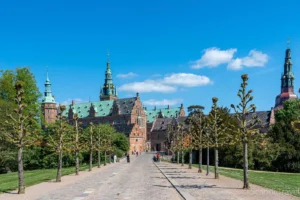No visit to St Petersburg would be complete without an excursion to the Faberge Museum, which is located at the Shuvalov Palace. This museum is dedicated to the preservation and promotion of Russia’s cultural heritage. Situated on the banks of the beautiful Fontanka River, the Shuvalov Palace was renowned in past times for the lavish balls attended by the Local nobility, including the Russian Imperial family. The Faberge Museum, today housed in the Shuvalov Palace, is home to the world’s largest collection of Faberge, at over four thousand pieces. Born into a family of jewellers, Peter Carl Faberge trained across Europe to become St Petersburg’s premier jeweller. In 1885, he was named jewel provider of the Imperial Court, and in 1890 was given full access to the Imperial Collections. The most famous of Faberge creations were the Imperial Eggs. Between 1885 and 1917, these jewelled eggs were created by Peter Carl Faberge for the Tsars Alexander III and Nicholas II, as Easter gifts for their wives and mothers. (Easter is the Russian Orthodox Church’s most important holiday). The first Faberge egg was created for Empress Maria Federovna in 1885; known as the Hen Egg, it was crafted from gold, with an opaque white enamel shell which opened to reveal three “surprises”: a matte yellow egg yolk opened to reveal a gold hen; this in turn opened to reveal a miniature diamond and ruby replica of the imperial crown. Approximately sixty-five known eggs in total were made by the House of Faberge; only fifty seven have survived. (Some were commissioned by nobility after the Imperial eggs became renowned). Two more were planned for Easter in 1918, but due to the Russian Revolution they were never delivered. Egg designs were ever more elaborate, and each contained a surprise. The Faberge Museum in St Petersburg opened in November 2013. It houses the Link of Times Cultural Historical Foundation Collection, owned by Russian entrepreneur Viktor Vekselberg. This man’s intention was to repatriate the works of great Russian masters to the nation, and for the enjoyment of the public. Many of the pieces had been sold by the Bolsheviks during the 1920s and the 1930s. Included in the collection are the Imperial Coronation Egg (1897), nine other Imperial Eggs (acquired for over $100 million), dozens of Faberge cigarette cases, and hundreds of other exquisite Faberge pieces. Additionally, works by other Russian masters are exhibited as well. A private collection of paintings by Renoir is another highlight. Aside from being a cultural and artistic delight, a visit to the Faberge Museum is a once in a lifetime opportunity to see Imperial Eggs up close and in person for oneself. Make sure you add a visit to your St Petersburg agenda – we guarantee you’ll be enchanted!
St Petersburg Treasures: The Faberge Museum

Cozy Evenings in Helsinki: Harbors, Families, and the Magic of the North 🌙✨
Helsinki is a city that changes its mood with the rhythm of the day, and perhaps its most charming side appears in the evening. As

10 Magical Winter Experiences You Can Only Have in Lapland. Part 2.
Experience 6: Snowmobile Safaris to the Arctic Wilderness 🏔️ Cover vast snowy distances quickly on a snowmobile safari. From frozen rivers to fells with panoramic

10 Magical Winter Experiences You Can Only Have in Lapland. Part 1.
Experience 1: Chasing the ✨ Arctic Northern Lights One of the biggest reasons travelers book Lapland holidays is to witness the Northern Lights trip of

🌍 The Smart Traveler’s Guide to Exploring Multiple Nordic Countries in Two Weeks
Have just 10 to 14 days to explore Scandinavia? You’re in luck. A well-planned multi-country Nordic tour is one of the smartest ways to experience

Eyjafjallajökull: Iceland’s Volcanic Giant That Stopped the World 🔥
In the heart of Iceland’s dramatic south coast lies a sleeping giant with a name that stumps even the most seasoned travelers: Eyjafjallajökull (pronounced roughly
